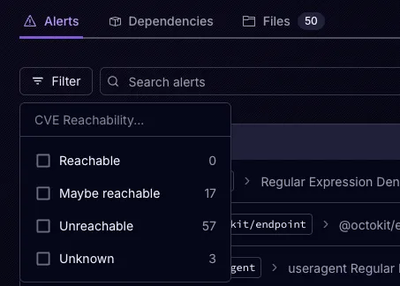
Product
Announcing Precomputed Reachability Analysis in Socket
Socket’s precomputed reachability slashes false positives by flagging up to 80% of vulnerabilities as irrelevant, with no setup and instant results.
X_ITE X3D Browser, view and manipulate X3D, VRML, glTF and other 3D sources in HTML.
X_ITE is a comprehensive 3D library entirely written in JavaScript and uses WebGL for 3D rendering. Authors can publish X3D, VRML, glTF and other 3D file formats online within an HTML5 page with X_ITE that works with web browsers without prior plug-in installation. Since X3D is backwardly compatible, X_ITE can also be used as a VRML viewer.
🚀 For more information and a live preview, please visit our home page.
X_ITE needs your support. If you become a Patreon, we can improve X_ITE even better, or simply subscribe to receive the latest news.
Using a CDN improves website performance, reliability, and security by caching content closer to users, distributing traffic loads, and providing protection against attacks.
If you are going to use X_ITE in a production environment, you should use a fixed version of X_ITE. You can get a list of all available versions here on npm.
jsDelivr is an open-source content delivery network (CDN) renowned for its no-cost access, swift performance, and reliable service.
<script defer src="https://cdn.jsdelivr.net/npm/x_ite@11.6.1/dist/x_ite.min.js"></script>
<!-- or as ES module for use in scripts -->
<script type="module">
import X3D from "https://cdn.jsdelivr.net/npm/x_ite@11.6.1/dist/x_ite.min.mjs";
</script>
Info: It is no longer necessary to include the CSS file.
To install, use the following command:
$ npm install x_ite
Maybe you are curious now how to use X_ITE with Electron?
Also try x_ite-node, a pure Node.js version, without any dependencies on Electron or any browser. Suitable for just reading 3D files, analyzing, processing and generating X3D.
$ npm install x_ite-node
This script initializes an X3D canvas within an HTML page, configuring it to contain a scene, a camera and a geometric cube with default material properties. It then animates the rotation of the cube within the scene, ensuring that the camera captures the dynamic action.
<script defer src="https://cdn.jsdelivr.net/npm/x_ite@11.6.1/dist/x_ite.min.js"></script>
<x3d-canvas update="auto" contentScale="auto">
<X3D profile='Interchange' version='4.0'>
<head>
<unit category='angle' name='degree' conversionFactor='0.017453292519943295'></unit>
</head>
<Scene>
<Viewpoint
description='Initial View'
position='2.869677 3.854335 8.769781'
orientation='-0.7765887 0.6177187 0.1238285 28.9476440862198'></Viewpoint>
<Transform DEF='Box'
rotation='0 1 0 0'>
<Shape>
<Appearance>
<Material></Material>
</Appearance>
<Box></Box>
</Shape>
</Transform>
<TimeSensor DEF='Timer'
cycleInterval='10'
loop='true'></TimeSensor>
<OrientationInterpolator DEF='Rotor'
key='0, 0.25, 0.5, 0.75, 1'
keyValue='0 1 0 0, 0 1 0 90, 0 1 0 180, 0 1 0 270, 0 1 0 0'></OrientationInterpolator>
<ROUTE fromNode='Timer' fromField='fraction_changed' toNode='Rotor' toField='set_fraction'></ROUTE>
<ROUTE fromNode='Rotor' fromField='value_changed' toNode='Box' toField='set_rotation'></ROUTE>
</Scene>
</X3D>
</x3d-canvas>
The same scene can also be created using pure JavaScript:
<script type="module">
import X3D from "https://cdn.jsdelivr.net/npm/x_ite@11.6.1/dist/x_ite.min.mjs";
const
canvas = document .createElement ("x3d-canvas"), // Or get an already inserted <x3d-canvas> element.
browser = canvas .browser, // Get X3DBrowser reference.
scene = await browser .createScene (browser .getProfile ("Interchange"), browser .getComponent ("Interpolation", 1));
// Append <x3d-canvas> element to body:
document .body .appendChild (canvas);
// Change Browser Options (this could also be done by setting the attributes of the canvas):
browser .setBrowserOption ("AutoUpdate", true); // Disable animations if <x3d-canvas> is not visible.
browser .setBrowserOption ("ContentScale", -1); // Increase resolution for HiDPI displays.
// Create Viewpoint:
const viewpointNode = scene .createNode ("Viewpoint");
viewpointNode .set_bind = true; // Bind the viewpoint.
viewpointNode .description = "Initial View"; // Appears now in the context menu.
viewpointNode .position = new X3D .SFVec3f (2.869677, 3.854335, 8.769781);
viewpointNode .orientation = new X3D .SFRotation (-0.7765887, 0.6177187, 0.1238285, 0.5052317);
scene .rootNodes .push (viewpointNode);
// Create Box:
const
transformNode = scene .createNode ("Transform"),
shapeNode = scene .createNode ("Shape"),
appearanceNode = scene .createNode ("Appearance"),
materialNode = scene .createNode ("Material"),
boxNode = scene .createNode ("Box");
appearanceNode .material = materialNode;
shapeNode .appearance = appearanceNode;
shapeNode .geometry = boxNode;
transformNode .children .push (shapeNode);
scene .rootNodes .push (transformNode);
// Give the node a name if you like.
scene .addNamedNode ("Box", transformNode);
// Create animation:
const
timeSensorNode = scene .createNode ("TimeSensor"),
interpolatorNode = scene .createNode ("OrientationInterpolator");
timeSensorNode .cycleInterval = 10;
timeSensorNode .loop = true;
for (let i = 0; i < 5; ++ i)
{
interpolatorNode .key [i] = i / 4;
interpolatorNode .keyValue [i] = new X3D .SFRotation (0, 1, 0, Math .PI / 2 * i);
}
scene .rootNodes .push (timeSensorNode, interpolatorNode);
// Add routes:
scene .addRoute (timeSensorNode, "fraction_changed", interpolatorNode, "set_fraction");
scene .addRoute (interpolatorNode, "value_changed", transformNode, "set_rotation");
// Show scene.
await browser .replaceWorld (scene);
</script>
Read more in Accessing the External Browser.
Contributions are always welcome. There is no special form to do this. A good idea is to fork the X_ITE repository and create a separate branch from the development branch, make your changes and then make a pull request.
For more information see CONTRIBUTING.
X_ITE is free software and licensed under the MIT License.
FAQs
X_ITE X3D Browser, view and manipulate X3D, VRML, glTF and other 3D sources in HTML.
The npm package x_ite receives a total of 385 weekly downloads. As such, x_ite popularity was classified as not popular.
We found that x_ite demonstrated a healthy version release cadence and project activity because the last version was released less than a year ago. It has 0 open source maintainers collaborating on the project.
Did you know?

Socket for GitHub automatically highlights issues in each pull request and monitors the health of all your open source dependencies. Discover the contents of your packages and block harmful activity before you install or update your dependencies.

Product
Socket’s precomputed reachability slashes false positives by flagging up to 80% of vulnerabilities as irrelevant, with no setup and instant results.

Product
Socket is launching experimental protection for Chrome extensions, scanning for malware and risky permissions to prevent silent supply chain attacks.

Product
Add secure dependency scanning to Claude Desktop with Socket MCP, a one-click extension that keeps your coding conversations safe from malicious packages.